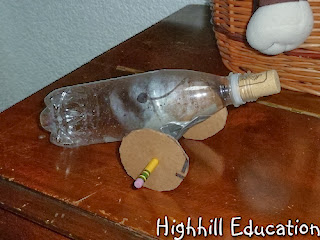Gunpowder had a profound effect during the Renaissance. It changed fighting tactics, weapons and armor, and fort construction. Gunpowder was invented by the Chinese during the ninth century, but didn't reach Europe until 400 years later.
Although the trebuchet and catapult were both used during the Renaissance, the cannon gradually took over. The Warwolf was a grand trebuchet belonging to Edward Longshanks and used to fight the Scots in 1304. The Battle of Crecy, which took place in 1346, was the first major battle in which the cannon was used. King Charles VIII of France used the cannon in 1494 to defeat the Italians, which lead to the exile of the Medici Family in Florence.
The top secret formula for gunpowder contained charcoal, sulfur and potassium nitrate. The mystery ingredient, potassium nitrate also known as saltpeter, was produced from the dung of barn animals. Experts who became skilled at producing saltpeter from horse dung were known as Petermen.
Once water was added to gunpowder and it was made into "cakes", it became easier to transport and cannons began to develop. The first cannons had large barrels made of bronze and could shoot heavy stone balls great distances. Improved processing techniques of saltpeter resulted in more powerful cannons. Later cannons were loaded from the rear (breech loading).
Cannons rendered armor nearly useless, and thick walled forts were no longer sufficient defenses. In addition, spots surrounding the outer castle circular towers were dead zones, much like blind spots for drivers operating motor vehicles. Archers could not reach the areas and enemy could safely launch attacks from dead zones. In an attempt to improve defenses, Michaelangelo redesigned the footprint of the castle to have pointy corners. The new castle layouts were known as star forts. Although they improved defense, the invention of the cannon was responsible for the destruction of many medieval castles.
The invention of the cannon lead to the invention of the hand cannon which is much like it sounds. A scary to fire cannon small enough to be held. The hand cannon led to the arquebus, or an early version of the musket. They were first fired with a match, and later improved by using a device similar to a lighter to ignite the gunpowder. Further advance led to arquebus which were lit by flintstone.
After learning about gunpowder and cannons, it was time to make and fire our own cannons.
Make a Cannon
Materials:
water bottle
cork
vinegar
baking soda
cardboard
duct tape
scissors
pencil
The first step was to cut two wheels from cardboard.
A pencil was poked through the wheels and taped to the base of the water bottle so the cannon could be aimed upward.
Next a paper towel was cut in half and the two ply layers were separated.
A tablespoon of baking soda was scooped into the center of the paper towel.
Then it was wrapped up.
Vinegar, the secret ingredient, was poured into the cannon (about 1/2 cup).
The baking soda, cannon ball was dropped into the bottle.
A tight fitting cork was placed in the mouth of the bottle.
The cannon was gently agitated.
Then aimed..........
and boom.
The kids really liked this project. It was simple and I highly recommend it!
Check out these great blog hops. They are filled with activity ideas for kids.













No comments:
Post a Comment
Note: Only a member of this blog may post a comment.